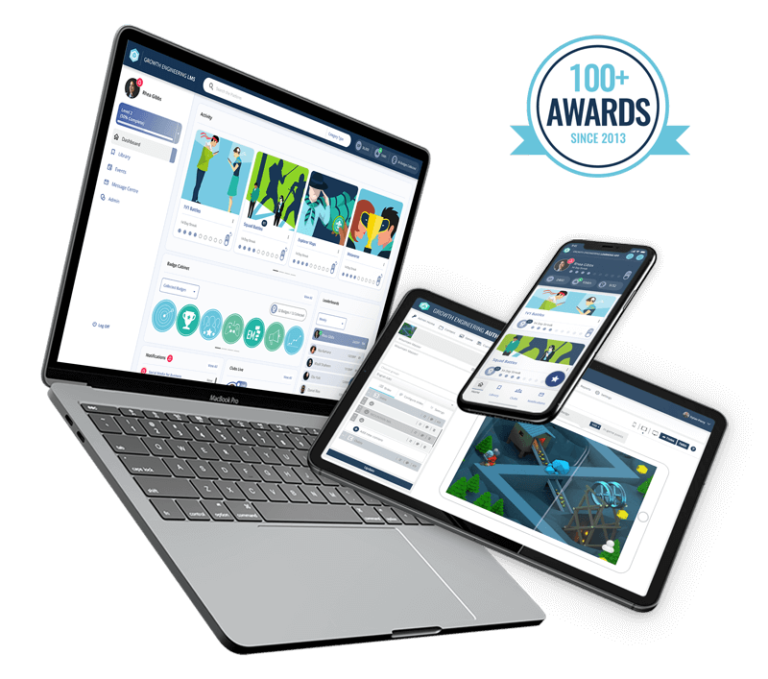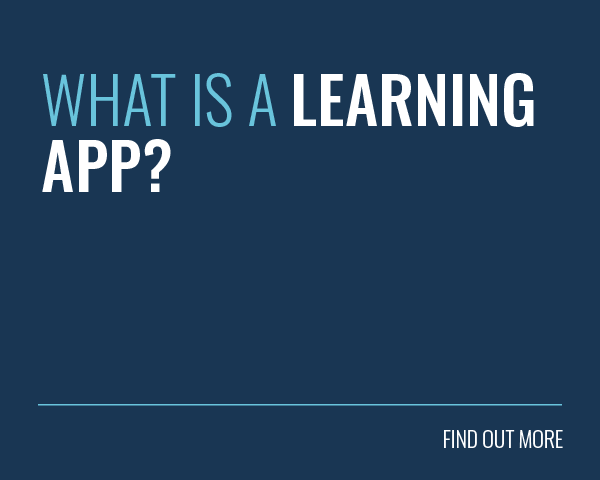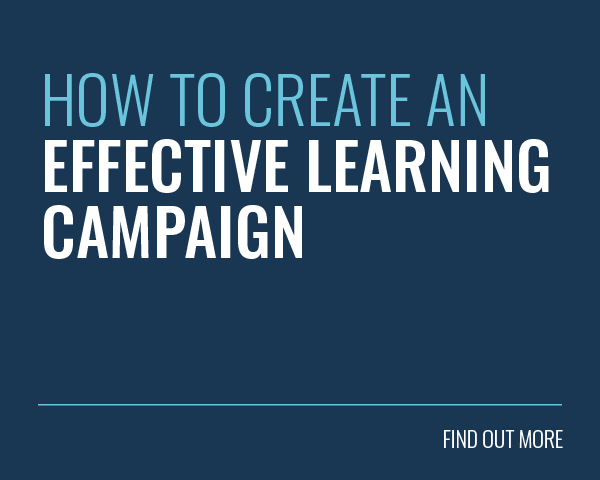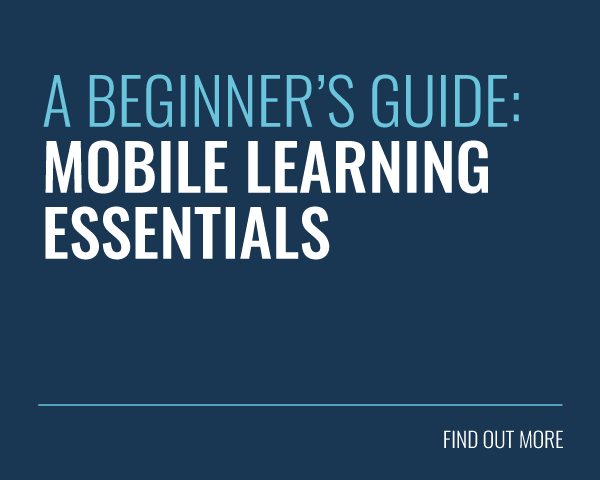
The history of microlearning is in fact, lengthier than you might imagine… In fact, the first ever example of microlearning took place on the 14th of July, at 14:22 pm, approximately 1.8 million years ago.
This is when Dave the Homo Erectus had the idea of passing on his extensive knowledge about fire making, but in short instalments.
- Lesson 1 was about gathering some moss.
- Lesson 2 was about finding the right sticks and flint.
- And lesson 3 was about starting the fire (you get the point!).
Okay, this may have been a slight fabrication, but it’s difficult to pinpoint an exact moment when microlearning revolutionised everyday learning. Microlearning is a recently recognised phenomenon, but it’s a very natural way for us to learn. We’ve been learning in speedy doses for millennia!
Firstly, we’re going to discover the origins of this engaging and impactful form of learning. Secondly, we’ll look at the exciting things it currently has to offer us. Let’s get started.
The Origins of Microlearning
Like the meteorite that killed the dinosaurs, the cold British rain, and that unhinged Gangnam Style song from a few years back, microlearning appeared to come out of nowhere. Yet, the concept had been bubbling underground for quite some time…
The first published use of the term microlearning dates back to 1963 in a book called ‘The Economics of Human Resources,’ by Hector Correa (sounds like a riveting bedtime read!).
Microlearning started its journey to eLearning stardom with the domestic use of the internet in the mid-1990s. The internet revolutionised the way the world was able to learn. Suddenly we could stream our lessons online, or upload learning modules in the space of an afternoon.
Despite the internet making it much easier to share training, the early years of online learning were the equivalent of waiting in a queue at the theme park. You should be having a load of fun, but instead, you’re stuck with a long, slow and boring experience.
eLearning opened the door to microlearning. But what came next blew it right off the hinges…
Smartphones and Learning Apps
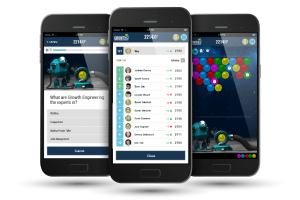 Learning apps are designed with the micro-learner in mind. This is mainly because they’re downloaded onto smartphones, so people will often be learning whilst on the go. Got a spare five minutes on the train? Let’s learn some physics! Want to exercise your mind at the gym with a bit of Spanish? No hay problema!
Learning apps are designed with the micro-learner in mind. This is mainly because they’re downloaded onto smartphones, so people will often be learning whilst on the go. Got a spare five minutes on the train? Let’s learn some physics! Want to exercise your mind at the gym with a bit of Spanish? No hay problema!
The first smartphone was released in 1994 and had 10 in-built apps. This included a calculator, an address book, a notepad, a sketch pad and more. With the dawn of the smartphone, learning opportunities would multiply and then some.
With access to the internet available at all times in our pocket (3G), learners were welcomed into a world of knowledge with just a few taps. The App Store store helped to further this with an increasing number of educational apps. It didn’t take long for instructional designers and app creators to tailor learning content to the mobile experience, by creating shorter, more impactful learning experiences.
If you had to pick a single date in time where microlearning began to take off, it would be 29th June 2007, when the first iPhone was released. This is where microlearning really skyrocketed. Learning apps became a staple of online learning all over the world.
In 2018, Apple announced there were over 200,000 educational apps on the iStore. Hardly any of these are lengthy lectures or long-winded training units. Most of these apps teach in microunits. Popular learning apps include Duolingo, Khan Academy and the YouTube app.
What are the Current Trends of Microlearning?
Microlearning has grown from minuscule beginnings into a multi-million-pound industry. Ever since the internet, we’ve been finding ways to condense learning. So now we know the history, let’s take a look at the ongoing trends of microlearning and where the path will lead us…
1. More Data
The more detailed your analytics are, the better grasp you’ll have of how effective your training has been. Microunits may only take minutes to complete, but they can be rich in analytics as well. xAPI is a new eLearning standard you can use to get richer data from your training.
xAPI will give you an extra level of insight into how your learners are interacting with your training. It’s a level above all other learning technology specifications. This is because xAPI helps to track informal learning and informal learning counts for 90% of all learning. This means you can rest assured that with xAPI, your analytics will be a more accurate representation of your employee’s learner journey.
2. More Focus on Personalisation
94% of businesses say that personalisation is key to their success. From coffee to burgers to your streaming service; you can now tailor many products to your exact preferences. Pioneering learning technologies are making it easy for learners to enjoy a personalised experience.
On The Knowledge Arcade, learners are able to personalise their profiles. More importantly, they’re able to pursue a learning path of their own making. With learning being so tailored, it suddenly becomes a lot more engaging.
3. Video-based Learning
61% of teachers believe that students prefer to learn via video. This is only due to rise as it gets easier to create your very own videos.
The Khan Academy is a perfect example of how our thirst for microlearning videos is unquenchable! They have created around 440 million educational micro-lectures for their 2.2 million subscribers.
4. Game-based Learning
Game-based learning mixes the world of L&D with gaming. Questions, videos, images, text and audio can be inserted into games via slides, transforming the learning experience into an enjoyable game.
Growth Engineering Authoring Tool is a game based authoring tool that empowers you to create engaging learning games. You can choose any game template from our incredible library.! From whack-a-mole to bubble blasters, there are loads of different games you can apply with the click of a button!
Here’s our very own Juliette talking about game-based learning vs gamification:
5. Microlearning is Getting Shorter
When the idea of microlearning surfaced, 20 minutes seemed like a nanosecond in comparison to an hour-long classroom session. As the L&D industry put more research into the benefits of microlearning, we’ve all come to realise that smaller is better.
Why? The average British person gets distracted after just seven minutes. With the internet, our phones, social media and streaming services, never before have we had so many things fighting for our attention! It’s fair to say that the more condensed our learning is, the better chance we have of information being absorbed and behaviour changing.
Final Words
The history of microlearning is hard to pin down. From out of nowhere, it’s snuck up on us like Christmas (Although it has been around for a long, long time). Realistically, we can put it down to the rise of the smartphone. Smartphones have given us the freedom to learn anywhere, any time.
No longer are we chained to a desk. A few minutes learning DIY tips here, a few minutes learning the history of Russia there.
Learning apps have therefore put microlearning in the spotlight. It’s now changing the way everyone learns. As technology and accessibility improve, the whole world will go microlearning crazy!
What would your organisation look like if you could unleash the power of microlearning and empower your learners to learn wherever, whenever?
Want to know more about the impact you could make on your organisation using a super engaging microlearning app? Get yourself a free demo of our microlearning app, Growth Engineering Learning App!
Unlimited Learner Engagement on
The Impact Suite
